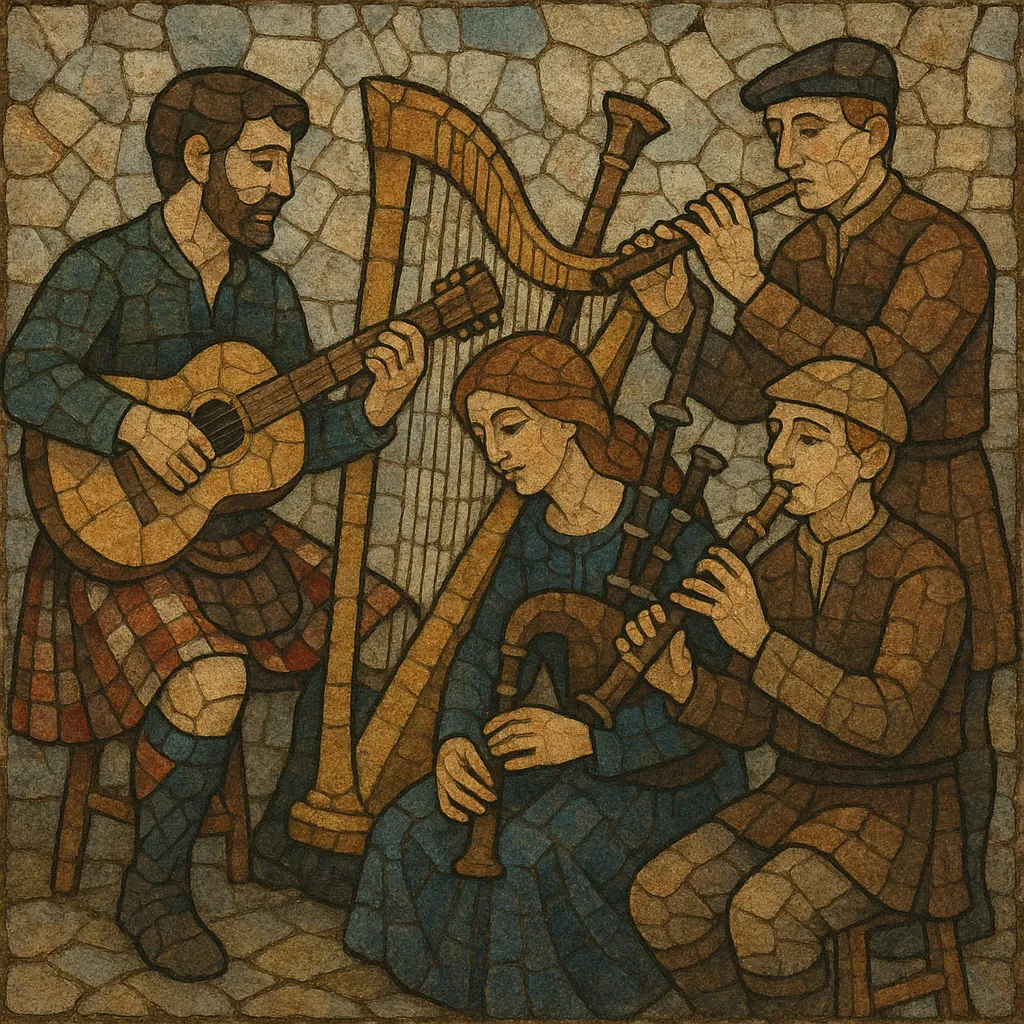The Scottish folk revival is a mid‑20th‑century resurgence of traditional Scots and Gaelic song, balladry, and dance‑tune performance that blossomed in urban folk clubs and festivals.
It combined field‑collected repertoire and oral tradition with contemporary arranging, guitar‑ and bouzouki‑accompaniment, and ensemble playing that foregrounded fiddle, smallpipes, clàrsach (harp), and whistle. The revival emphasized community singing, political and social commentary, and the reclamation of Scots and Gaelic languages.
While rooted in centuries‑old forms (ballads, bothy songs, waulking songs, pipe and fiddle music), the movement professionalized the scene, built new circuits of clubs and festivals, and inspired later fusions from Celtic rock to contemporary Gaelic pop.
Prior to the 20th century, Scottish traditional music thrived through oral transmission in rural and Gaelic‑speaking communities. Scholarly collectors (including Francis James Child in the late 19th century) cataloged Scots ballads, laying a textual foundation that later revivalists would draw upon.
The modern revival coalesced in the 1950s with the founding of the School of Scottish Studies at the University of Edinburgh (1951). Hamish Henderson and colleagues recorded tradition bearers such as Jeannie Robertson and Flora MacNeil, while Alan Lomax’s 1951 visit helped catalyze interest. The Edinburgh People’s Festival Ceilidh (1951) symbolized a public re‑centering of Scottish song, language, and dance.
Folk clubs in Edinburgh, Glasgow, and beyond nurtured audiences and performers. The Corries, Archie Fisher, Jean Redpath, and others popularized repertoire from Child ballads to contemporary topical songs. The revival embraced community singing and political expression, with Scots and Gaelic language repertoire circulating alongside English‑language songs.
Touring ensembles such as Silly Wizard, Battlefield Band, The Tannahill Weavers, and Boys of the Lough modernized arrangements—pairing fiddle sets (reels, jigs, strathspeys) with guitar/bouzouki accompaniment (often in DADGAD/GDAD tunings) and adding smallpipes or clàrsach textures. Psychedelic/experimental currents (e.g., The Incredible String Band) showed how traditional forms could inform innovative songwriting, foreshadowing Celtic rock and broader folk‑rock movements across Britain.
Groups like Capercaillie helped bring Gaelic song to wider audiences with studio polish and pop/rock production while maintaining core traditional aesthetics. Festivals grew (later including Glasgow’s Celtic Connections, founded 1994), and archival work fed teaching, session culture, and media. The revival also spurred renewed interest in piping traditions and smallpipes.
Artists such as Karine Polwart, Julie Fowlis, Breabach, Lau (Kris Drever), and many younger bands have refreshed repertoire, language use, and arranging—blending tradition with contemporary folk, indie, and acoustic production. Digital archives (e.g., Tobar an Dualchais/Kist o Riches) have expanded access to source recordings, ensuring the revival’s repertoire remains a living, evolving practice.


